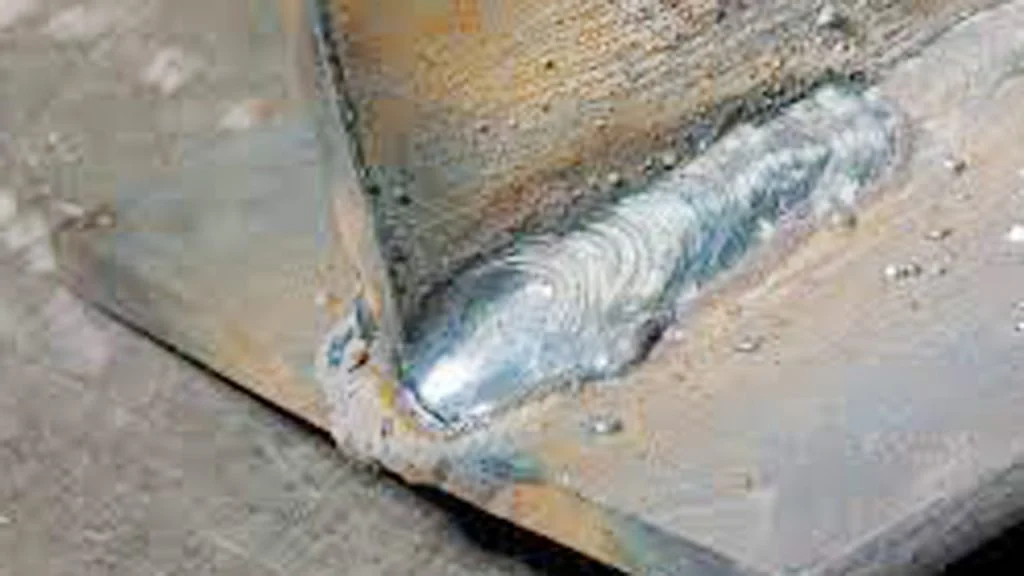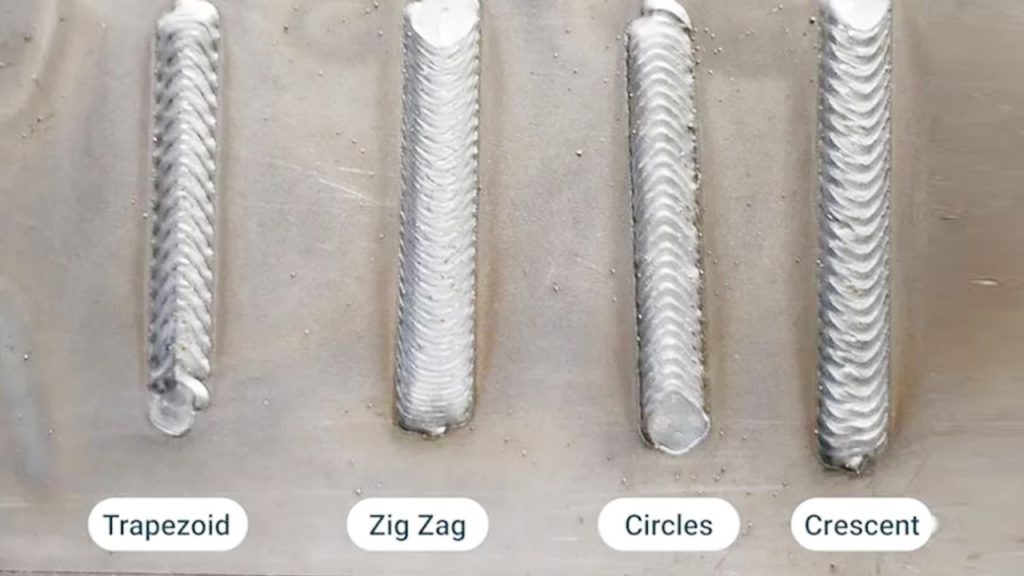Welding can make you blind if proper safety measures are not taken. The intense light and UV rays from welding can damage the eyes.
Welding is a common practice in many industries, but it comes with risks. One major concern is the potential damage to your eyes. The bright light and UV radiation produced during welding can harm your vision. Without proper protection, you could experience temporary or even permanent blindness.
Understanding these risks is crucial for anyone involved in welding. This post will explore how welding affects your eyes and what you can do to protect them. Stay informed and keep your vision safe.

Credit: www.youtube.com
Welding And Eye Safety
Welding is a skill that joins metals together, creating strong and lasting bonds. However, it comes with its fair share of risks, especially to your eyes. Imagine staring at the sun without sunglasses. That’s what unprotected welding can feel like. So, let’s dive into why eye safety is crucial when welding.
Risks Of Welding
Welding involves intense heat and bright light, which can harm your eyes. This light includes ultraviolet (UV) and infrared (IR) radiation. Here are some common risks:
- Photokeratitis: Also known as “welder’s flash,” this is like sunburn but on your eyes. It’s painful and can make your eyes very sensitive to light.
- Cataracts: Long-term exposure to UV light can lead to cataracts, which cloud your vision and may require surgery.
- Retinal Burns: Intense light can burn the retina, causing permanent vision damage or even blindness.
Importance Of Eye Protection
Now that we know the risks, let’s talk about how to protect your eyes. Eye protection is not just a recommendation; it’s a must. Here’s why:
- Safety Goggles: They shield your eyes from flying debris and sparks. Always choose goggles that meet safety standards.
- Welding Helmets: These helmets come with special lenses that filter UV and IR light. They protect your entire face, not just your eyes.
- Auto-Darkening Lenses: These lenses adjust to the light intensity automatically. They offer convenience and continuous protection.
Think of eye protection as an investment. Would you rather spend a little now on good safety gear or risk paying a lot more for medical bills later?
In conclusion, welding is a valuable skill, but it comes with risks, especially to your eyes. Always prioritize safety and invest in the right protective gear. After all, you only get one pair of eyes. Let’s keep them safe and sound!
How Welding Affects Vision
Welding is a crucial skill in many industries. It also poses risks to vision. This section discusses how welding affects vision. Understanding these risks helps in taking necessary precautions.
Arc Eye Condition
Arc eye, also known as “welder’s flash,” is a common condition. It occurs when the eyes are exposed to intense UV light. Symptoms include pain, redness, and a gritty feeling. Light sensitivity and tearing might also occur. These symptoms can be very uncomfortable.
Arc eye is usually temporary. However, it should not be ignored. Proper eye protection can prevent this condition. Use safety goggles or helmets with appropriate filters. This simple step can save your eyes from unnecessary pain.
Long-term Vision Damage
Continuous exposure to welding light may cause long-term damage. Over time, this can lead to cataracts. Cataracts cloud the eye’s lens, affecting vision. Vision becomes blurry and colors may seem faded. If untreated, it can lead to blindness.
Another risk is retinal damage. The retina is crucial for seeing clearly. Intense light can damage it, leading to permanent vision loss. Welding without proper eye protection is risky. Always use protective gear to safeguard your vision.
Types Of Eye Protection
Welding is a fascinating skill, but it can be dangerous if you don’t protect your eyes. The bright light and flying sparks can cause serious damage. So, how can you keep your eyes safe? Let’s dive into the types of eye protection you need while welding.
Welding Helmets
Welding helmets are a welder’s best friend. These helmets cover your entire face and neck, shielding you from sparks, heat, and harmful light.
- Auto-darkening helmets: These helmets automatically adjust the shade of the lens based on the brightness of the welding arc. Very handy, right?
- Passive helmets: These have a fixed shade lens, so you need to lift the helmet when not welding. It can be a bit of a hassle, but it gets the job done.
Many welders prefer auto-darkening helmets because they offer convenience and continuous protection. Imagine not having to flip your helmet up and down constantly. Sounds good, doesn’t it?
Safety Goggles
While welding helmets are essential, safety goggles provide extra protection. They protect your eyes from flying debris and harmful rays when you’re not wearing the helmet.
- Standard safety goggles: These are basic goggles that shield your eyes from sparks and debris. They’re lightweight and easy to wear.
- Specialized welding goggles: These offer UV and IR protection to keep your eyes safe from the intense light of welding. They’re a must-have for any welder.
Combining safety goggles with a welding helmet gives you double protection. It’s like wearing a belt and suspenders – better safe than sorry, right?
| Type | Protection Level | Convenience |
|---|---|---|
| Auto-darkening Helmet | High | Very Convenient |
| Passive Helmet | High | Less Convenient |
| Standard Goggles | Moderate | Convenient |
| Specialized Welding Goggles | High | Moderate |
Remember, protecting your eyes while welding is not just about comfort; it’s about safety. So, whether you’re a hobbyist or a professional, investing in good eye protection is a no-brainer. Got any fun welding stories or tips? Share them in the comments below!

Credit: www.reddit.com
Choosing The Right Helmet
When it comes to welding, protecting your eyes is paramount. The right helmet can be the difference between a successful welding project and a trip to the eye doctor. But with so many options out there, how do you choose the right one? Let’s dive into the details and break it down. We’ll cover two main types of helmets: Auto-Darkening Helmets and Fixed Shade Helmets.
Auto-darkening Helmets
Auto-darkening helmets are like the rockstars of the welding world. They have special lenses that automatically adjust to the brightness of the welding arc. Imagine having a pair of sunglasses that get darker when the sun comes out and lighter when it goes away. Pretty cool, right?
Here are some key benefits:
- Convenience: You don’t have to keep flipping your helmet up and down. Your hands are free to work!
- Eye Protection: The lens reacts in a fraction of a second, shielding your eyes from harmful UV and IR radiation.
- Versatility: You can use them for different types of welding.
However, they do come with a higher price tag. But think of it as an investment in your safety and comfort. In the long run, it’s worth every penny.
Fixed Shade Helmets
Fixed shade helmets are the classic, no-frills choice. They have a lens with a constant shade, usually a #10, #11, or #12. You have to lift the helmet up to see, which can be a bit of a hassle.
So, why would anyone choose a fixed shade helmet? Here are a few reasons:
- Cost: They are generally more affordable than auto-darkening helmets.
- Durability: Fewer moving parts mean less can go wrong. These helmets can take a beating.
- Simplicity: Sometimes, simple is better. There’s no need to worry about batteries or sensors failing.
But remember, every time you lift the helmet, your eyes are exposed to potential hazards. It’s like wearing a seatbelt – you don’t realize its importance until you need it.
To sum up, choosing the right helmet depends on your needs and budget. Whether you go for the high-tech auto-darkening helmet or the reliable fixed shade helmet, the most important thing is to protect those peepers! After all, you only get one pair of eyes. So, choose wisely and weld safely!
Proper Use Of Safety Gear
Welding is a powerful and essential skill in many industries, from construction to automotive repair. However, it comes with its fair share of risks, including the potential to cause serious eye damage, even blindness. This is why the proper use of safety gear is absolutely crucial. Let’s dive into the essentials of using safety gear correctly to protect your vision.
Correct Fit And Maintenance
First and foremost, ensuring your safety gear fits correctly is key. If your helmet or goggles are too loose, they won’t provide adequate protection. Think of it like wearing a seatbelt that doesn’t click – it’s there, but it won’t do its job. Make sure to adjust the straps and padding so that the gear sits snugly against your face without being uncomfortable.
Maintenance is equally important. Dirty or scratched lenses can impede your vision, making it difficult to see your work and increasing the risk of accidents. Regularly clean your safety gear with gentle soap and water, and inspect it for any damage. Replace any compromised parts immediately. Remember, a small investment in maintenance can save you from a big hospital bill later.
Common Mistakes To Avoid
Even seasoned welders can fall into bad habits. Here are some common mistakes to avoid:
- Neglecting to wear safety gear: It might be tempting to skip the helmet for a quick weld, but this can lead to serious injuries.
- Using the wrong type of gear: Not all safety gear is created equal. Ensure you’re using the right equipment for the specific type of welding you’re doing.
- Improper storage: Leaving your gear in dusty or humid places can degrade its quality. Store it in a clean, dry place to keep it in top condition.
- Ignoring the fit: As mentioned earlier, an ill-fitting helmet or goggles won’t protect you properly. Always check the fit before starting your work.
By avoiding these common mistakes, you can significantly reduce the risk of eye injuries and ensure a safer welding experience.
In conclusion, the proper use of safety gear is not just about following regulations; it’s about protecting your most valuable asset – your vision. Take the time to fit, maintain, and correctly use your gear. After all, seeing is believing, and in welding, it’s also surviving.

Credit: www.ishn.com
Additional Safety Measures
Welding can be a dangerous task, especially for your eyes. Implementing additional safety measures can significantly reduce the risk of injuries. These precautions ensure a safer working environment and protect your vision.
Protective Clothing
Wearing the right protective clothing is essential. Flame-resistant garments can prevent burns. A welding jacket and gloves are crucial. They protect your skin from sparks and hot metal. Ensure your clothing covers all exposed skin. This reduces the risk of injury.
Work Area Preparation
Preparing your work area enhances safety. Ensure the workspace is well-ventilated. This reduces exposure to harmful fumes. Keep the area clean and free from clutter. A tidy workspace minimizes tripping hazards. Use non-flammable materials around the welding area. This reduces the risk of fire.
First Aid For Eye Injuries
Eye injuries from welding are no joke. If you’ve ever experienced the intense flash of a welder’s arc, you’ll know how important it is to take care of your eyes. Proper first aid can make all the difference between a minor injury and a major issue. Let’s dive into the necessary steps to protect your eyes if you find yourself in a sticky situation.
Immediate Steps
Time is of the essence when dealing with eye injuries. Here’s what you should do right away:
- Stop what you’re doing: Turn off the welding equipment and move to a safe area.
- Rinse your eyes: Use clean water or saline solution. Do this for at least 15 minutes. This helps remove any debris or chemicals.
- Avoid rubbing: Rubbing can make the injury worse. Your eyes are delicate; handle them with care.
- Remove contact lenses: If you wear contacts, take them out immediately. They can trap harmful particles against your eye.
When To Seek Medical Help
Knowing when to seek professional help is crucial. Here are some signs you should watch out for:
- Persistent pain: If the pain doesn’t go away after rinsing, it’s time to see a doctor.
- Blurry vision: Any changes in your vision, like blurriness or double vision, need immediate medical attention.
- Swelling or redness: If your eye is swollen or red, it could be a sign of a more serious injury.
- Light sensitivity: If you find yourself squinting or avoiding light, seek help. This can be a symptom of a more serious issue.
Remember, it’s always better to be safe than sorry. Your eyes are invaluable, and a quick visit to the doctor can prevent long-term damage.
So, the next time you find yourself in a welding accident, stay calm and follow these steps. Your eyes will thank you!
Safety Training And Education
Welding is a fascinating skill that allows us to create, repair, and innovate. However, it comes with certain risks. One of the most serious concerns is eye safety. Without proper training, welders can suffer from serious eye injuries, including blindness. This is where safety training and education become crucial. Let’s dive into why training is essential and where you can find the best resources to stay safe.
Importance Of Training
Training in welding safety isn’t just about following rules; it’s about understanding the dangers and knowing how to protect yourself. Did you know that welding arcs can emit ultraviolet (UV) light, which can cause “arc eye” or “welder’s flash”? This condition is like a sunburn on your cornea and can be extremely painful.
Proper training teaches you how to use protective gear such as welding helmets, goggles, and shields. It also covers the correct techniques to minimize exposure to harmful light and fumes. Think of it as learning to drive a car; without the right lessons, the risks multiply.
Resources For Welders
Finding the right resources for welding safety training is easier than you might think. Here are some valuable places to start:
- Online Courses: Websites like Coursera and Udemy offer comprehensive welding safety courses that you can take from the comfort of your home.
- Local Workshops: Many community colleges and trade schools provide hands-on training sessions. These are perfect for learning under the guidance of experienced professionals.
- Industry Certifications: Organizations like the American Welding Society (AWS) offer certifications that not only boost your skills but also make you more employable.
- Safety Manuals: Don’t underestimate the power of a good manual. Books and PDF guides can provide detailed information and serve as handy references.
By investing time in these resources, you’re not just protecting your eyes; you’re also building a solid foundation for a successful welding career.
Remember, safety training and education are not optional; they are essential. So, put on that helmet, grab those goggles, and get ready to weld safely!
Frequently Asked Questions
Does Welding Affect Your Eyesight?
Yes, welding can harm your eyesight. Bright light and UV radiation from welding can cause eye damage. Always wear protective gear to prevent injuries.
Is Welding Blindness Permanent?
Welding blindness can be temporary or permanent. Immediate treatment and eye protection are crucial. Seek medical attention if symptoms persist. Always use proper safety gear to prevent injury.
How Do You Not Go Blind From Welding?
Wear a proper welding helmet with a dark face shield to protect your eyes. Use safety goggles with UV protection.
Why Is My Vision Blurry After Welding?
Blurry vision after welding may result from exposure to intense light and ultraviolet radiation, causing welder’s flash. Wear proper eye protection to prevent this. Seek medical advice if symptoms persist.
Conclusion
Welding can be dangerous for your eyes if safety measures are ignored. Always wear proper eye protection. This helps prevent serious eye damage. Understand the risks and take precautions. Your vision is precious. Don’t risk it for convenience. Use welding helmets and safety glasses.
Stay safe while welding and protect your eyes. Welding can be safe with the right steps. Remember, safety first. Protect your eyes and enjoy welding safely.

